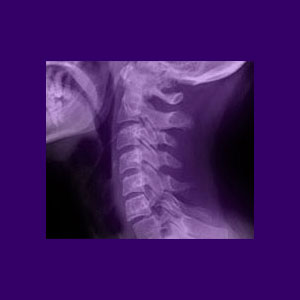
Facet arthropathy is another name for facet arthrosis, facet joint arthritis or facet joint syndrome. Arthropathy means a painful or diseased condition and the term facet denotes that this condition affects the spinal facet joints, also known as zygapophysial joints. Facet joint syndrome is a possible source of localized mechanically-enacted back pain, but diagnosis of the condition as a primary source of widespread neurologically based pain is usually incorrect.
This commentary defines facet joint arthopathy and explains the degenerative processes that work on the spinal facet joints, as well as their potential effects.
What is Facet Arthropathy?
The facet joints are the fin-like projections on the posterior side of the spinal vertebrae. These are the structures you can feel through your skin when you touch your backbone. The role of the facet joints is to provide stability and strength to the spinal column. Each set of facet joints connects to the set above and below, making the spine a strong, but flexible support structure.
The facet joints, like many other bodily joints, are protected by smooth cartilage and a synovial capsule filled with synovial fluid. These measures help the joint to operate smoothly and without friction. However, it is common, normal and expected for these protective structures to break down with time and activity. This process is known as osteoarthritis.
If you have been diagnosed with facet joint arthritis in your spine, particularly in the mid to lower cervical or lower lumbar regions, you should not be surprised. Almost everyone will show mild to moderate arthritic change in these areas as a normal part of the aging process.
Facet Joint Pain Facts
Most people with facet joint arthritis have no pain or little pain which causes them no worry. This is typical of osteoarthritis in general, since the condition is rarely debilitating in any joint. However, osteoarthritic change is one of the great back pain scapegoats, since it can be easily recognized and diagnosed on virtually any type of imaging study, even one as primitive as an x-ray.
In some circumstances, extreme degeneration may induce some discomfort in a localized area. Neurological pain may be possible in a limited area, as well, if small nerves become involved in the syndrome.
However, the possibility of facet syndrome being responsible for the types of chronic and debilitating lower back pain and neck pain syndromes often theorized is typically an unenlightened and almost fantastic idea. This speculation is readily supported by the abysmal curative results experienced by the majority of patients who seek facet joint syndrome therapy. In a great number of cases, the facet degeneration exists, for sure; however, it is simply coincidental to symptoms experienced.
Facet Arthropathy Evaluation
I see more and more doctors using this particular diagnostic term for facet joint pain on MRI reports. It seems to have virtually replaced the conclusion of facet syndrome, as so many knowledgeable patients have come to realize that that particular term is usually a good indicator of… “I do not know what is causing your pain, but I see facet degeneration. Maybe I should blame that…”
Thanks doc, but I do not need to see the MRI report to know facet joint arthritis is most likely present. If the patient is an adult and typical, it will likely be there! If you are diagnosed with any facet joint pathology, be certain to ask lots of questions. Be sure to understand how the symptoms may relate to the structural changes and always consider getting a second opinion, just to be safe.




